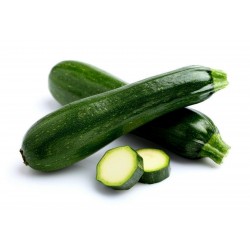Menu
-
MenuGeri
- Home
-
Kategoriler
-
-
Kategoriler
-
Sebze tohumları
-
Ülkelere Göre Çeşitler
- Ermenistan'dan çeşitler
- BH'den Çeşitler
- Hırvatistan'dan Çeşitler
- Fransa'dan Çeşitler
- Almanya'dan Çeşitler
- Yunanistan'dan Çeşitler
- Macaristan Çeşitleri
- Hindistan'dan Çeşitler
- İtalya'dan çeşitleri
- Japonya'dan Çeşitler
- Kuzey Makedonya çeşitleri
- Peru Çeşitleri
- Rusya'dan Çeşitler
- Sırbistan'dan Çeşitler
- Slovenya'dan Çeşitler
- İspanya Çeşitleri
- Tayland çeşitleri
- Türkiye'den Çeşitler
- ABD'den Çeşitler
- Domates tohumları
- Mısır tohumları
- Kabak ailesi
- Fasulye ailesi
- Salatalık tohumları
- Dolma biber tohumları
- Havuç ailesi
- Soğan ailesi
- Marul tohumları
- Patates ailesi
- Lahana ailesi
- Turp tohumları
- Pancar ailesi
- Karpuz tohumları
- Kavun tohumları
- Karnabahar tohumları
- Ayçiçeği ailesi
-
Ülkelere Göre Çeşitler
- Meyve tohumları
- Acı biber tohumları
- Tıbbi bitki tohumları
- Tırmanma bitki tohumları
- Ağaçlar - Çalı tohumları
- Palmiye tohumları
- Süs bitkileri tohumları
- Tütün tohumları
-
Sebze tohumları
-
-
-
-
- YENİ ÜRÜNLER
- Hesap oluştur
- Teslimat - Ödeme
- FAQ
- Ana Sayfa
-
- Sebze tohumları
- Ülkelere Göre Çeşitler
- Kuzey Makedonya çeşitleri
- Hırvatistan'dan Çeşitler
- Türkiye'den Çeşitler
- BH'den Çeşitler
- Japonya'dan Çeşitler
- Hindistan'dan Çeşitler
- Ermenistan'dan çeşitler
- Fransa'dan Çeşitler
- Slovenya'dan Çeşitler
- Sırbistan'dan Çeşitler
- Yunanistan'dan Çeşitler
- Rusya'dan Çeşitler
- İtalya'dan çeşitleri
- İspanya Çeşitleri
- ABD'den Çeşitler
- Almanya'dan Çeşitler
- Peru Çeşitleri
- Tayland çeşitleri
- Macaristan Çeşitleri
- Karnabahar tohumları
- Kavun tohumları
- Karpuz tohumları
- Ayçiçeği ailesi
- Pancar ailesi
- Turp tohumları
- Domates tohumları
- Mısır tohumları
- Kabak ailesi
- Fasulye ailesi
- Salatalık tohumları
- Dolma biber tohumları
- Lahana ailesi
- Patates ailesi
- Soğan ailesi
- Marul tohumları
- Havuç ailesi
- Ülkelere Göre Çeşitler
- Ambalaj ve malzeme
- Mantar miselyumu
- Bitki soğanları
- Organik baharatlar
- Ayurveda Bitkileri
- F1 hibrit tohumları
- Muz tohumları
- PayPal ve Kart ödemesi yok X
- Dev bitki tohumları
- Cold-resistant plants
- Bambu tohumları
- Meyve ve sebze şekil
- Büyük tohum paketleri
- Meyve tohumları
- Acı biber tohumları
- Tıbbi bitki tohumları
- Tırmanma bitki tohumları
- Ağaçlar - Çalı tohumları
- Palmiye tohumları
- Süs bitkileri tohumları
- Tütün tohumları
- Teslimat - Ödeme
- Ekim Talimatları
- Bitki bakımı
- Su bitki tohumları
- Kaktüs tohumları
- Çiçek tohumları
- Sebze tohumları
Last Product Reviews
These peppers came all the way from eastern Europe and took a while at no f...
By
 Fitim Berani on 21/09/2023
Fitim Berani on 21/09/2023
Verified Purchase
Last customers
- Stef, Waalwijk, Netherlands
- Dušan, KRAVANY NAD DUNAJOM, Slovakia
- Arno, Ehrenkirchen, Germany
- Costas, LARNACA , Cyprus
- Fulvio francesco, Santa Domenica Talao, Italy
- william, Dun, France
- Aymeric , Saint tricat, France
- Ricard, Sant Celoni, Spain
- Maureen, Enniscorthy Co Wexford , Ireland
- Paul, St. Vigil in Enneberg (BZ), Italy
- Ricardo jorge , Viseu , Portugal
- Radosav, Kragujevac, Serbia
- Sylvie, Neyruz, Switzerland
- Julien, Scionzier, France
- Zoran, Vinca, Serbia
- Josef, Hochdorf-Assenheim, Germany
- Davide, London, United Kingdom
- Kimberly, Victoria, Gozo, Malta
- Saša , Beograd, Serbia
- Ewa, Galway, Ireland
- Ioannis , Kato Achaia, Greece
- Samuele, Milano, Italy
- Dubravka, Niš , Serbia
- Theodoros, Grevena, Greece
- goderis, bredene, Belgium
- Vickie, SARONA, United States
- Maria, ÓBIDOS / LEIRIA, Portugal
- Emmanuel, Dijon, France
- Henri , Koumac, New Caledonia
- Manuel , Mülchi, Switzerland
Çok satanlar
885 adet ürün var.
Toplam 885 üründen 325-336 arası gösteriliyor
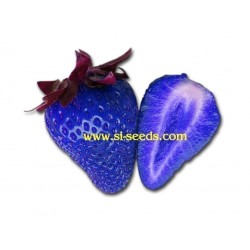
African Blue Strawberries...
Fiyat
€4,50
SKU: V 1 B
Seeds Gallery Com,
5/
5
<h2><strong>AFRICAN BLUE STRAWBERRIES SEEDS</strong></h2>
<h2><strong><span style="color:#ff0000;">Price for Package of 5 seeds.</span></strong></h2>
<p>Scientists are genetically modifying strawberries in order to allow them to resist freezing temperatures better. They're doing it by artificial transfer of genes from a species of fish called the Arctic Flounder Fish. The Arctic Flounder Fish produces an anti-freeze that allows it to protect himself in freezing waters.<br /><br />They isolated the gene that produces this anti-freeze and introduced it to the strawberry. The result is a strawberry that looks blue and doesn't turn to mush or degrade after being placed in the freezer. While they're not in production, research is ongoing.</p>
<p><strong><a href="http://buzz.naturalnews.com/000061-food-science-GMO.html" target="_blank" rel="noreferrer noopener">http://buzz.naturalnews.com/000061-food-science-GMO.html</a></strong></p>
V 1 B

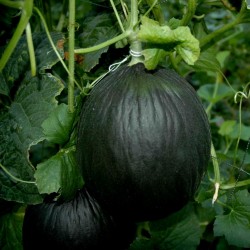
Black Melon Seeds
Fiyat
€2,45
SKU: V 47
Seeds Gallery Com,
5/
5
<h2><strong>Black Melon Seeds</strong></h2>
<h2><span style="color:#ff0000;"><strong>Price is for pack of 10 seeds.</strong></span></h2>
<p>The fruit has good size (2 - 3 kg.). The flesh is light green, and is very sweet and tastes a little bit like the taste of pineapple. Due to black color, it's very good for the region where is not much sun and where the beautiful sunny days are rare because as we all know black attracts the sun's rays more than any other color, so that the melons ripen in record time and a lot less than all other varieties </p>
<p><a href="http://www.youtube.com/watch?v=Hje7-Pl9ryQ&feature=youtu.be" target="_blank" style="background-color:#ffffff;" rel="noreferrer noopener"><strong>http://www.youtube.com/watch?v=Hje7-Pl9ryQ&feature=youtu.be</strong></a></p>
V 47 (10 S)

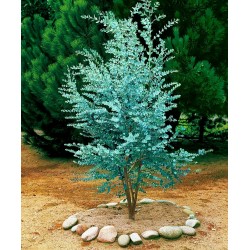
Tohum Cider Gum, Gunn'ın...
Fiyat
€2,50
SKU: T 7
Seeds Gallery Com,
5/
5
<!DOCTYPE html>
<html>
<head>
<meta http-equiv="Content-Type" content="text/html; charset=UTF-8" />
</head>
<body>
<h2><strong>Tohum Cider Gum, Gunn'ın Sakızı (Eucalyptus gunnii)</strong></h2>
<h2><span style="color: #ff0000;"><strong>10 tohum paketi için fiyat.</strong></span></h2>
<p>Okaliptüs gunni, gunn okaliptüsü veya elma şarabı, myrtaceae familyasına ait büyük bir gelişme ağacıdır. Elma suyu sakızı tazmanya'ya özgüdür. Okaliptüs parvula türleri ile en sert okaliptüs türlerinden biridir: böylece...</p>
<p>Okaliptüs gunniGunn'ın okaliptüsü veya elma şarabı, Myrtaceae familyasına ait büyük gelişme ağacıdır. Elma suyu sakızı Tazmanya'ya özgüdür. Türlü en sert okaliptüslerden biridir. Okaliptüs parvula Böylece Avrupa'da yetiştirebiliriz. Muhteşem bir gövdeye ve çok açık bir gölgeye sahip, son derece hızlı büyüyen bir ağaçtır. Genç bitki örtüsü de çok güzel: bazı bahçıvanlar sakızları çalılık durumunda tutmak için sakız saklıyor.</p>
<p>Cider açıklaması<br />Okaliptüs gunnii çok hızlı büyüyen bir ağaçtır: 6 yıllık ekimde, zaten 10 m yüksekliğindedir. Boyu 15 ila 20 m'ye kolayca ulaşabilir. Gövde, eşsiz veya daha çok defa çoğalır, kalınlaşır ve büyük, kabuk kabukları kabardığı zaman pembemsi tonlarda lekelenir, pembe veya turuncu ile yıkanır.</p>
<p>Tacı gevşek, çok hafif bir gölge veriyor. Gunn'in okaliptüsünün yaprakları çelik mavi renktedir. Çocuk dalları büyük ve güzel yapraklarıyla zıt ve yuvarlak yapraklara sahiptir. Yaşlı dallar, bazen tırpan şeklinde daha büyük, mızrak şeklinde, alternatif yapraklar geliştirir. Yapraklar buruşup yakıldığında uçucu yağlar bırakır.</p>
<p>Çiçekler sıcak havalarda daha iyi görünür. Küçük kremalı pamuklu buketler yaparlar. Küçük fincan şeklindeki meyveler, uçucu yağın çok konsantre olduğu tohumları üretir.</p>
<p>büyümek Okaliptüs gunnii<br />Elma suyu sakızı diğer okaliptüs türlerine kıyasla çok dayanıklıdır ve sonunda - 18° C civarında bir sıcaklıkta kurulduktan sonra, Aynı zamanda jelin kendisinden daha az buzlu cereyanı da destekler. Bu nedenle kış rüzgarının korunan bir bölgesine ekilir. Soğuk bölgeler için, yüksek jetli bir okaliptüs (büyük) istemek biraz yanıltıcıdır, ancak her yıl (3 ila 6 m yüksekliğinde ve genişliğinde) karides yetiştiriciliği çok olabilir. Tatminkar, çünkü biz hala çocuk yeşilliklerinden faydalanıyoruz.</p>
<p>Okaliptüs gunnii mümkün olduğunca genç bir bitkiden bitki. Gerçekten de, kökler bir tencerenin dibine sarılmaktan nefret eder ve herhangi bir nakli desteklenmez. Saksı kültürü birkaç yıl için mümkündür, ancak açık değildir; toprağın tekrar başlamasına zararlıdır. Mümkün olan en rustik elma zamkını elde etmek için, ilk kış aylarında bol miktarda sulama ve kış koruması ile yerinde ekim ve ekilmeye çalışmak en iyisidir.</p>
<p>Kireçtaşı olmadığı sürece zeminde güneşli, toleranslı bir pozlama gerektirir. Yılda bir metreden daha fazla büyür.</p>
<p>boyut Okaliptüs gunnii<br />Büyük ağaçlardaki ölü dalları temizleyerek, elma şarabının büyüklüğü sadece yavru yapraklarıyla bir çalı olarak tutmak isteyen bahçıvanlar içindir. Düşük bel daha sonra her baharda, her dalın üçüncü düğümünde gerçekleştirilir.</p>
<p>fide Okaliptüs gunnii<br />Taze elma şarabı tohumları genellikle nemli toprakta 18 ila 24° C arasında bir ay içinde kolayca çimlenir. Depolanır ve kurutulursa, soğuk tabakalaşma gerektirebilir (4° C'de 6 hafta). Tohum kabı büyük olmalı, saksı başına sadece bir ayak tutulmalı ve ana top toplanmadan kök topunu rahatsız etmeden hızlıca nakledilecektir.</p>
</body>
</html>
T 7

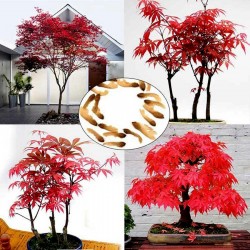
Japanese Red Maple Seeds...
Fiyat
€1,95
SKU: T 2
Seeds Gallery Com,
5/
5
<h2><strong>Japanese Red Maple Seeds (Acer palmatum atropurpureum)</strong></h2>
<h2><span style="color:#ff0000;"><strong>Price for Package of 5 seeds.</strong></span></h2>
<p><span style="font-size:10pt;line-height:1.5em;">Japanese maple, Acer palmatum, is a deciduous shrub or small tree with a broad, rounded shape. Native to China, Korea and Japan, this lovely plant is greatly admired and is grown in temperate gardens and landscapes all over the world. This red 'ATTROPURPUREUM" variety is possibly even more beautiful than the standard and more commonly offered version and it is one of the most beautiful small trees for an ornamental landscape. It is perfectly suited as a specimen tree, an accent in a mixed border, or in a container on the patio. It anchors the Japanese style garden. </span></p>
<p>The brilliant autumn foliage lights up the garden, and the slender twigs and contorted branches provide winter interest. The canopy is wispy and delicate, and in some cultivars, weeping. The species usually stays about 4 to 6 m tall and wide, but can get larger under ideal conditions. It has slender, glabrous twigs and smooth gray bark. Branches tend to grow in horizontal layers, and often are contorted and twisted, and some specimens have more than one main trunk. The palmate leaves are 5-13 cm long and wide, and deeply dissected with 5 to 11 lobes. The lobes are lance shaped, sharply pointed at the tips and doubly toothed on the edges. Acer palmatum attropurpureum is famous for its autumn display when leaves turn brilliant shades of deep red. </p>
<p>It needs a fertile, well drained, acidic soil with filtered to full shade, the latter being best in warmer regions. It will take sub-tropical heat. Highly frost resistant it is not drought tolerant and needs regular watering.</p>
<p>Japanese maple will grow from seeds, and seedlings tend to be faster growing, stronger and more drought tolerant than cultivars.</p>
<div>
<table cellspacing="0" cellpadding="0" border="1"><tbody><tr><td colspan="2" width="100%" valign="top">
<p><span style="color:#008000;"><strong>Sowing Instructions</strong></span></p>
</td>
</tr><tr><td valign="top" nowrap="nowrap">
<p><span style="color:#008000;"><strong>Propagation:</strong></span></p>
</td>
<td valign="top">
<p><span style="color:#008000;">Seeds</span></p>
</td>
</tr><tr><td valign="top" nowrap="nowrap">
<p><span style="color:#008000;"><strong>Pretreat:</strong></span></p>
</td>
<td valign="top">
<p><span style="color:#008000;">0</span></p>
</td>
</tr><tr><td valign="top" nowrap="nowrap">
<p><span style="color:#008000;"><strong>Stratification:</strong></span></p>
</td>
<td valign="top">
<p><span style="color:#008000;">3-4 months in moist sowing mix at 2-5 ° C refrigerator</span></p>
</td>
</tr><tr><td valign="top" nowrap="nowrap">
<p><span style="color:#008000;"><strong>Sowing Time:</strong></span></p>
</td>
<td valign="top">
<p><span style="color:#008000;">all year round> Autumn / Winter preferred</span></p>
</td>
</tr><tr><td valign="top" nowrap="nowrap">
<p><span style="color:#008000;"><strong>Sowing Depth:</strong></span></p>
</td>
<td valign="top">
<p><span style="color:#008000;">1 cm</span></p>
</td>
</tr><tr><td valign="top" nowrap="nowrap">
<p><span style="color:#008000;"><strong>Sowing Mix:</strong></span></p>
</td>
<td valign="top">
<p><span style="color:#008000;">Coir or sowing mix + sand or perlite</span></p>
</td>
</tr><tr><td valign="top" nowrap="nowrap">
<p><span style="color:#008000;"><strong>Germination temperature:</strong></span></p>
</td>
<td valign="top">
<p><span style="color:#008000;">18-20 ° C</span></p>
</td>
</tr><tr><td valign="top" nowrap="nowrap">
<p><span style="color:#008000;"><strong>Location:</strong></span></p>
</td>
<td valign="top">
<p><span style="color:#008000;">bright + keep constantly moist not wet</span></p>
</td>
</tr><tr><td valign="top" nowrap="nowrap">
<p><span style="color:#008000;"><strong>Germination Time:</strong></span></p>
</td>
<td valign="top">
<p><span style="color:#008000;">3-6 weeks</span></p>
</td>
</tr><tr><td valign="top" nowrap="nowrap">
<p><span style="color:#008000;"><strong>Watering:</strong></span></p>
</td>
<td valign="top">
<p><span style="color:#008000;">Water regularly during the growing season</span></p>
</td>
</tr><tr><td valign="top" nowrap="nowrap">
<p><span style="color:#008000;"><strong> </strong></span></p>
</td>
<td valign="top">
<p><br /><span style="color:#008000;"><em>Copyright © 2012 Seeds Gallery - Saatgut Galerie - Galerija semena. </em><em>All Rights Reserved.</em><em></em></span></p>
</td>
</tr></tbody></table></div>
T 2


Green Rose Flower Seeds
Fiyat
€2,50
SKU: F 4
Seeds Gallery Com,
5/
5
<h2><span style="font-size:14pt;"><strong>Green Rose Flower Seeds Lover's Gift</strong></span></h2>
<h2><span style="color:#ff0000;font-size:14pt;"><strong>Price for Package of 5 seeds.</strong></span></h2>
<div>
<p>Extremely beautiful and still rare Green Rose Seeds.</p>
</div>
<div>Roses are best known for their flowers. Roses are popular garden shrubs, as flowering shrubs. They are also grown as cut flowers, as one of the most popular and commonly sold florists' flowers. <span style="font-size:11px;line-height:1.5em;">A few roses are grown for scented foliage (such as Rosa rubiginosa, ornamental thorns, Rosa sericea or their ornamental fruit Rosa moyesii).</span></div>
<div>
<p>Rose hips are occasionally made into jam, jelly, and marmalade, or are brewed for tea, primarily for their high vitamin C content. They are also pressed and filtered to make rose hip syrup. Rose hips are also used to produce Rose hip seed oil, which is used in skin products and some makeup products.</p>
</div>
<div>The leaves of most species are 5–15 centimetres long, pinnate, with (3–) 5–9 (–13) leaflets and basal stipules; the leaflets usually have a serrated margin, and often a few small prickles on the underside of the stem. The vast majority of roses are deciduous but a few (particularly in South east Asia) are evergreen or nearly so.</div>
<div><strong>Symbolism</strong></div>
<div>The rose has always been valued for its beauty and has a long history of symbolism. Roses are ancient symbols of love and beauty. 'Rose' means pink or red in a variety of languages (such as Romance languages, Greek, and Polish). The rose was sacred to a number of goddesses (including Isis and Aphrodite), and is often used as a symbol of the Virgin Mary. The ancient Greeks and Romans identified the rose with their goddesses of love referred to as Aphrodite and Venus. In Rome a wild rose would be placed on the door of a room where secret or confidential matters were discussed. The phrase sub rosa, or "under the rose", means to keep a secret — derived from this ancient Roman practice.</div>
<div><strong>China</strong></div>
<div>The China roses, based on Rosa chinensis, were cultivated in East Asia for centuries and finally reached Western Europe in the late 1700s. They are the parents of many of today's hybrid roses, and they brought a change to the form of the flower. Compared with the aforementioned European rose classes, the Chinese roses had less fragrant, smaller blooms carried over twiggier, more cold-sensitive shrubs. Yet they possessed the amazing ability to bloom repeatedly throughout the summer and into late autumn, unlike their European counterparts. The flowers of China roses were also notable for their tendency to "suntan," or darken over time — unlike the blooms of European roses, which tended to fade after opening. This made them highly desirable for hybridisation purposes in the early 1800s. According to Graham Stuart Thomas, China Roses are the class upon which modern roses are built.[7] Today's exhibition rose owes its form to the China genes, and the China Roses also brought slender buds which unfurl when opening. Tradition holds that four "stud China" roses ('Slater's Crimson China' (1792), 'Parsons' Pink China' (1793), and the Tea roses 'Hume's Blush Tea-scented China' (1809) and 'Parks' Yellow Tea-Scented China' (1824)) were brought to Europe in the late eighteenth and early nineteenth centuries; in fact there were rather more, at least five Chinas not counting the Teas having been imported.[8] This brought about the creation of the first classes of repeat-flowering Old Garden Roses, and later the Modern Garden Roses. Examples: 'Old Blush China', 'Mutabilis' (Butterfly Rose), 'Cramoisie Superieur'.</div>
<div>① Put seeds into 40° C water for 24 hours.</div>
<div>② Put seeds into very wet sands for germination. ( Generally it take more than 40 days. )</div>
<div>③ Move it into soil after it sprouts.</div>
<div>Germination temperature: 20-25℃</div>
<div>Germination time: 40 days</div>
<div>Growth optimum temperature: 10-25 ℃</div>
<div>Spacing : 20 * 20cm</div>
<div>Rose on soil not ask for much, just with some humus soil aggregate</div>
<div>structure be good training as long as the following three links will make good growth: </div>
<div>Rose is afraid of:</div>
<div>① Rose is drought tolerant plants, but it is afraid floods. It is necessary use non-glazed bonsai pots of soil cultivation. The principle is "do not pour water on it when soil is not dry. Wet it completely when you pour water on soil."</div>
<div>② Lend a high concentration of fertilizer (especially fertilizers) will result in the death of local rot.</div>
<div>③ All plants need sunlight. Rose like sunshine too.</div>
<div>Note: </div>
<div>1. Please seeds stored in a cool, dry place. </div>
<div>2. The seed surface is 1-2 times the diameter of the seed.</div>
<div>3.Our seeds are very easy to cultivate and the survival rate is very high. </div>
<div>Cover seeds with preservative films,and then,piercing the films to make several holes. Keep seeds covered in the daytime and uncover it in the night. Take off the preservative films when the seeds are half-germinated. The plant will be in a state of dormancy in summer and the leaves will turn yellow. Begginers should better use sand to cultivate the seeds.although the seeds will grow slower in the sand,the plants will be the most vigorous in the future. If you tend to use other kind of soil, try to use the kind with good water permeability,for example,the clay would not be a good choice. The soil should be disinfected by microwave oven before been used. Pay attention:the surface of the soil not be too dry, which is very important. When watering,all the soil should be wetted and there is no need to water in a cloudy day. </div>
<div>The pot could be 6-8cm in depth,it be an earthen basin or a plastic one. The volume of the soil should keep a distance of 1-2cm from the rim of the pot.</div>
<div>
<div><strong>Scientific classification</strong></div>
<div>Kingdom: Plantae</div>
<div>(unranked): Angiosperms</div>
<div>(unranked): Eudicots</div>
<div>(unranked): Rosids</div>
<div>Order: Rosales</div>
<div>Family: Rosaceae</div>
<div>Subfamily: Rosoideae</div>
<div>Genus: Rosa</div>
</div>
F 4

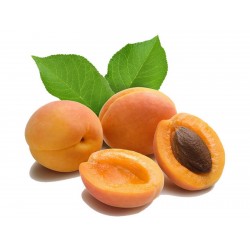
Mançurya kayısı tohumlar
Fiyat
€4,50
SKU: V 56
Seeds Gallery Com,
5/
5
<h2><strong>Mançurya kayısı tohumlar (Prunus Armeniaca var. mandshurica)</strong></h2>
<h2><span style="color:#ff0000;"><strong>10 tohum paketi için fiyat.</strong></span></h2>
<p>Lezzetli bir çeşittir, portakal eti ve koyu portakal kabuğu ile çok büyük bir meyvedir. Renk: sarı-turuncu-kırmızı Et: turuncu Lezzet: çok iyi Olgunlaşma süresi: Temmuz / Ağustos sonu</p>
<p>Kayısı yuvarlak taçlı bir çalı veya küçük bir ağaçtır ve genellikle 6 metreye kadar, nadiren 10 metreye kadar yüksekliklere ulaşır. Kabuk parlak ve kırmızımsı kahverengidir. Dalların kabuğu gençken çıplak ve kırmızımsıdır.</p>
<p>Yapraklar 5 ila 10 cm uzunluğunda, 3 ila 7 cm genişliğinde, yeşil renkli, geniş yumurta şeklinde yuvarlak oval, aniden keskinleştirilmiş ve tabanda yuvarlak. Yaprak marjı genellikle çift kesilir. Yapraklar çıplak, sadece alt tarafın sinir köşelerinde sakallı saçları var. Yapraklar tomurcuk pozisyonunda yuvarlanır. Yaprak sapı 2 ila 4 cm uzunluğundadır. Yaprak sapında genellikle 2 veya daha fazla bez vardır, bunlar büyük ve bazen hoştur.</p>
<p>Yaprakların önünde görünen çiçekler genellikle bireysel olarak veya daha nadiren çiftler halinde düzenlenir. Tomurcuk ölçekleriniz çiçeklenmenin başlangıcında düşer. Çiçek sapı maksimum 5 mm uzunluğunda, tüylü tüylü ve genellikle kırmızımsıdır. Çiçeklerin çapı yaklaşık 2.5 cm'dir. Çiçek fincan kabarık ve fincan şeklindedir. Beş sepals da tüylü tüylü ve bütündür. Beş yaprak soluk pembe-beyaz, 10 ila 15 mm uzunluğunda, yuvarlak, trafik oval ve bütündür. Yaklaşık 20, nadiren 30 organa kadar vardır. Anterler sarı. Yumurtalık ve prob ucu tabanı kadifemsi saçlara sahiptir.</p>
<p>Meyvenin çapı 4 ila 8 cm arasındadır ve neredeyse küresel ve nadiren uzamış, kadifemsi tüylü, soluk sarı ila turuncu-kırmızı renkli ve genellikle güneşli tarafta benekli veya noktalı karmindir. Boyuna bir karık vardır ve altta çatallıdır. Kağıt hamuru taş çekirdekten ayrılır. Taş çekirdek soğanlı merceksi, hafif pürüzlü ve 3 cm uzunluğundadır. Kenarları birkaç kez kalınlaştırılır ve karıklanır. Tohumlar acı veya tatlı tadı.</p>
<p>Çiçeklenme dönemi Mart'tan Nisan'a kadar uzanır.</p>
<table cellspacing="0" cellpadding="0" border="1"><tbody><tr><td colspan="2" width="100%" valign="top">
<p><span style="color:#008000;"><span style="font-family:'Helvetica Neue', Helvetica, Arial, sans-serif;">Sowing Instructions</span></span></p>
</td>
</tr><tr><td valign="top" nowrap="nowrap">
<p><span style="color:#008000;"><span style="font-family:'Helvetica Neue', Helvetica, Arial, sans-serif;">Propagation:</span></span></p>
</td>
<td valign="top">
<p><span style="color:#008000;"><span style="font-family:'Helvetica Neue', Helvetica, Arial, sans-serif;">Seeds</span></span></p>
</td>
</tr><tr><td valign="top" nowrap="nowrap">
<p><span style="color:#008000;"><span style="font-family:'Helvetica Neue', Helvetica, Arial, sans-serif;">Pretreat:</span></span></p>
</td>
<td valign="top">
<p><span style="color:#008000;"><span style="font-family:'Helvetica Neue', Helvetica, Arial, sans-serif;">soak in water for 24 hours</span></span></p>
</td>
</tr><tr><td valign="top" nowrap="nowrap">
<p><span style="color:#008000;"><span style="font-family:'Helvetica Neue', Helvetica, Arial, sans-serif;">Stratification:</span></span></p>
</td>
<td valign="top">
<p><span style="color:#008000;"><span style="font-family:'Helvetica Neue', Helvetica, Arial, sans-serif;">3 months in moist sowing mix at 2-5 ° C refrigerator</span></span></p>
</td>
</tr><tr><td valign="top" nowrap="nowrap">
<p><span style="color:#008000;"><span style="font-family:'Helvetica Neue', Helvetica, Arial, sans-serif;">Sowing Time:</span></span></p>
</td>
<td valign="top">
<p><span style="color:#008000;"><span style="font-family:'Helvetica Neue', Helvetica, Arial, sans-serif;">all year round> Autumn / Winter preferred</span></span></p>
</td>
</tr><tr><td valign="top" nowrap="nowrap">
<p><span style="color:#008000;"><span style="font-family:'Helvetica Neue', Helvetica, Arial, sans-serif;">Sowing Depth:</span></span></p>
</td>
<td valign="top">
<p><span style="color:#008000;"><span style="font-family:'Helvetica Neue', Helvetica, Arial, sans-serif;">1-1,5 cm</span></span></p>
</td>
</tr><tr><td valign="top" nowrap="nowrap">
<p><span style="color:#008000;"><span style="font-family:'Helvetica Neue', Helvetica, Arial, sans-serif;">Sowing Mix:</span></span></p>
</td>
<td valign="top">
<p><span style="color:#008000;"><span style="font-family:'Helvetica Neue', Helvetica, Arial, sans-serif;">Coir or sowing mix + sand or perlite</span></span></p>
</td>
</tr><tr><td valign="top" nowrap="nowrap">
<p><span style="color:#008000;"><span style="font-family:'Helvetica Neue', Helvetica, Arial, sans-serif;">Germination temperature:</span></span></p>
</td>
<td valign="top">
<p><span style="color:#008000;"><span style="font-family:'Helvetica Neue', Helvetica, Arial, sans-serif;">min. 20 ° C</span></span></p>
</td>
</tr><tr><td valign="top" nowrap="nowrap">
<p><span style="color:#008000;"><span style="font-family:'Helvetica Neue', Helvetica, Arial, sans-serif;">Location:</span></span></p>
</td>
<td valign="top">
<p><span style="color:#008000;"><span style="font-family:'Helvetica Neue', Helvetica, Arial, sans-serif;">bright + keep constantly moist not wet</span></span></p>
</td>
</tr><tr><td valign="top" nowrap="nowrap">
<p><span style="color:#008000;"><span style="font-family:'Helvetica Neue', Helvetica, Arial, sans-serif;">Germination Time:</span></span></p>
</td>
<td valign="top">
<p><span style="color:#008000;"><span style="font-family:'Helvetica Neue', Helvetica, Arial, sans-serif;">until it germinates </span></span></p>
</td>
</tr><tr><td valign="top" nowrap="nowrap">
<p><span style="color:#008000;"><span style="font-family:'Helvetica Neue', Helvetica, Arial, sans-serif;">Watering:</span></span></p>
</td>
<td valign="top">
<p><span style="color:#008000;"><span style="font-family:'Helvetica Neue', Helvetica, Arial, sans-serif;">Water regularly during the growing season</span></span></p>
</td>
</tr><tr><td valign="top" nowrap="nowrap">
<p><span style="color:#008000;"><span style="font-family:'Helvetica Neue', Helvetica, Arial, sans-serif;"> </span></span></p>
</td>
<td valign="top">
<p><span style="font-family:'Helvetica Neue', Helvetica, Arial, sans-serif;"><br /><span style="color:#008000;">Copyright © 2012 Seeds Gallery - Saatgut Galerie - Galerija semena. All Rights Reserved.</span></span></p>
</td>
</tr></tbody></table>
V 56

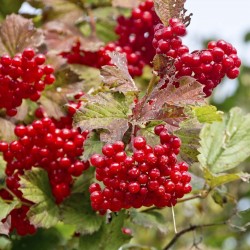
Amerikan kızılcıkbush...
Fiyat
€2,45
SKU: V 52
Seeds Gallery Com,
5/
5
<!DOCTYPE html>
<html>
<head>
<meta http-equiv="Content-Type" content="text/html; charset=UTF-8" />
</head>
<body>
<h2><strong>Amerikan kızılcıkbush Tohumları (Viburnum trilobum)</strong></h2>
<h2><span style="color: #ff0000;"><strong>10 tohum paketi için fiyat.</strong></span></h2>
<p><i><b>Viburnum trilobum</b></i><span>, </span>Adoxacea<span> </span>familyasından<span> </span>Kuzey Amerika<span>'da yetişen </span>kartopu<span> türü. </span>Avrupa<span>'daki </span>gilaburu<span> türüne çok benzer ve bazen onun alt türü olarak da sınıflandırılır.</span></p>
<p>Hardy, Adaptable, Easy to Grow, Showy Flowers, Fall Color, Showy Edible Fruits, Attracts Birds and Butterflies, Wildlife Food/Shelter, Hedge/Shrub Border, Bonsai, Cold, Heat, Drought and Wind Tolerant</p>
<p>The American Highbush Cranberry is native to swampy woods, bogs, lake margins, pastures, thickets, slopes, and moist low places from New Brunswick to British Columbia south to New York, the Great Lakes, South Dakota, and Oregon. It is a deciduous shrub with a rounded, upright spreading and sometimes arching habit. It typically grows to 10 to 15 feet tall. The leaves are three-lobed, maple-like, shiny dark green turning an attractive yellow red or reddish-purple in the fall. In spring it features an outer ring of 3/4 inch white sterile flowers surrounding the fertile but inconspicuous inner flowers, in a 3-inch flat-topped cluster. The flowers are followed by drooping clusters of cranberry-like bright red 1/4 inch edible berries (drupes) in the fall. The berries are edible fresh off the shrub and are much less bitter than those berries found on Viburnum opulus. The berries are sometimes used to make jams and jellies.</p>
<p>American Highbush Cranberry is not related to true cranberries; the name comes from its tart, edible red fruits.</p>
<p>Zone: 3 to 8</p>
<p>Growth Rate: Medium</p>
<p>Plant Type: Deciduous Fruiting Shrub</p>
<p>Family: Adoxaceae</p>
<p>Native Range: Northern North America</p>
<p>Height: 8 to 15 feet</p>
<p>Spread: 10 to 15 feet</p>
<p>Shape: Rounded with upright-spreading to irregular and arching branching.</p>
<p>Bloom Time: April - May</p>
<p>Bloom Color: White</p>
<p>Flower/Fruit: Small white flowers held in flat clusters followed by bright red 1/4 inch edible berries.</p>
<p>Sun: Full sun to part shade</p>
<p>Fall Color: Yellow red or reddish purple</p>
<p>Drought Tolerance: Moderate to High</p>
<p>Water: Medium to wet</p>
<p>Maintenance: Low</p>
<p>Site Requirements/ Soil Tolerances: Easily grown in average, medium moisture, well-drained soil in full sun to part shade. Prefers loams with consistent moisture, but tolerates a wide range of soils. Sometimes grows in wet or boggy soils in its native habitat.</p>
<p>Culture: Very tough and easy to grow. Occasional pruning to remove oldest stems may be helpful.</p>
<p>Uses: Shrub borders or foundations. Woodland margins. Hedge or screen.</p>
<p>Sowing Viburnum trilobum Seeds:</p>
<p>American Highbush Cranberry seed need a warm spell then a cold spell in order to mature the embryo and reduce the seed coat.</p>
<p>Scarification, Warm then Cold Stratification and moisture enhance germination.</p>
<p>Scarify: Soak 24 hours</p>
<p>Stratify: Warm 90 Days, then Cold 60 days, 40 Degrees F in a Moist Medium.</p>
<p>Germination: Sow 1/4” deep</p>
</body>
</html>
V 52 (10 S)

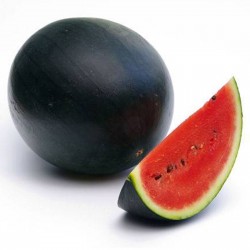
Black Sweet Watermelon Seeds
Fiyat
€2,50
SKU: V 134 B
Seeds Gallery Com,
5/
5
<h2 class=""><strong>Black Sweet Watermelon Seeds</strong></h2>
<h2><span style="color: #ff0000;" class=""><strong>Price for Package of 25 (1g) seeds.</strong></span></h2>
<div>The finest seeds through the finest seed selecting process with our leading technology to ensure the quality of the seeds with firm vigor, great disease tolerance as well as very high germination</div>
<div>Common Name: Black Sweet Watermelon Seeds</div>
<div>Scientific Name: Citrullus vulgaris Schrad</div>
<div>Soil: Any soil</div>
<div>Water: morning and evening</div>
<div>Fertilizer: 15-15-15</div>
<div>Harvest: - days</div>
<div>
<p>% Purity : 100</p>
</div>
<div>% Germ.: 89</div><script src="//cdn.public.n1ed.com/G3OMDFLT/widgets.js"></script>
V 134 B (25 S)


Ermenistan'dan Çeşit
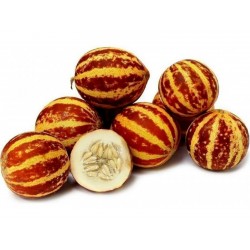
Tigger Kavun Tohumları
Fiyat
€4,95
SKU: V 46
Seeds Gallery Com,
5/
5
<meta http-equiv="Content-Type" content="text/html; charset=UTF-8" />
<h2><strong>Tigger Kavun Tohumları</strong></h2>
<h2><span style="color: #ff0000;"><strong>5 tohum paketi için fiyat.</strong></span></h2>
<p>Güçlü ve yoğun bir egzotik tat ve koku ile karakterizedir ve aynı zamanda çok dekoratiftir. Küçük boyutlu meyveler 150-450 gr ağırlığındadır. Tigger kavun bitkileri asma başına yirmi kavun verebilir. Yetiştirdiğimiz en muhteşem görünümlü kavun.</p>
<p>Tigger kavunun yumuşak kabuğu, dikey pas turuncu ve sarı renklere sahiptir. Kavunun kremsi, kirli beyaz eti sulu ve tatlıdır ve Asya armudu ve kavun ile karşılaştırılan bir tada sahiptir. Çoğu misk kavunu türü gibi, oldukça aromatik bir koku sunar ve olgunluğun zirvesindeyken içinde bulundukları tüm odayı parlattığı bilinmektedir. Tigger kavunları, yaklaşık olarak bir softball büyüklüğünde büyüyecek ve tamamen olgunlaştıklarında mütevazı bir pound ağırlığında olacaktır.</p>
<p>Tigger kavunu ilk olarak Dicle Nehri yakınında eski batı Ermenistan'da keşfedildi. Çoğu kavun çeşidi gibi, ılıman ve Akdeniz bölgelerinde yazın ılıktan sıcağa büyüyen günlerini tercih eder. Tırmanan asmalar üzerinde büyüyen Tigger kavunun küçük boyutu, onu nispeten küçük alanlarda yetiştirilmesine izin veren kafes için ideal hale getirir.</p>
V 46 (5 S)

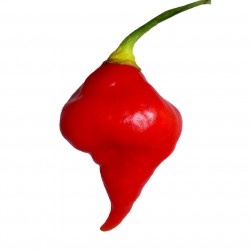
Habanero Kreole Seeds
Fiyat
€2,00
SKU: C 15
Seeds Gallery Com,
5/
5
<h2><span style="text-decoration:underline;"><em><strong>Habanero Kreole Seeds (C.chinense)</strong></em></span></h2><h3><span style="color:#ff0000;"><strong>Price for Package of 10 or 100 seeds.<br /></strong></span></h3><div>Very compact, densely foliaged plants bear an abundance of bright Red , thin-skinned hot peppers that are shaped like a like a lantern. Interesting shape and spicy taste make this pepper good to eat fresh, pickle, or use as a garnish. 95 days. 150.000-350.000 HSU</div><p><strong><a href="http://www.youtube.com/watch/?v=JVFsnvVvqW4" target="_blank" rel="noreferrer noopener">http://www.youtube.com/watch?v=JVFsnvVvqW4</a></strong></p>
C 15


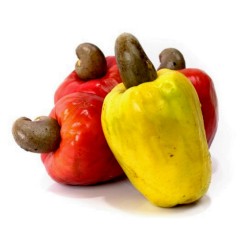
Cashew Nut Seeds Cashew...
Fiyat
€3,45
SKU: V 33
Seeds Gallery Com,
5/
5
<!DOCTYPE html>
<html>
<head>
<meta http-equiv="Content-Type" content="text/html; charset=UTF-8" />
</head>
<body>
<h2><strong><strong>Cashew Nut Seeds Cashew Apple (Anacardium occidentale)</strong><br /></strong></h2>
<h2><span style="color: #ff0000;"><strong>Price for Package of 1 seeds.</strong></span></h2>
<div>
<p>The<span> </span><b>cashew tree</b><span> </span>(<i>Anacardium occidentale</i>) is a tropical evergreen tree that produces the cashew<span> </span>seed<span> </span>and the cashew<span> </span>apple.<span> </span>It can grow as high as 14 m (46 ft), but the dwarf cashew, growing up to 6 m (20 ft), has proved more profitable, with earlier maturity and higher yields.</p>
<p>The species is native to<span> </span>Central America, the<span> </span>Caribbean Islands, and<span> </span>northern South America.<span> </span>Portuguese colonists in Brazil began exporting cashew nuts as early as the 1550s.<span> </span>In 2017,<span> </span>Vietnam,<span> </span>India, and<span> </span>Ivory Coast<span> </span>were the major producers.</p>
<p>The cashew seed, often simply called a cashew, is widely consumed. It is eaten on its own, used in recipes, or processed into cashew cheese or<span> </span>cashew butter. The shell of the cashew seed yields derivatives that can be used in many applications including lubricants, waterproofing, paints, and arms production, starting in World War II.<span> </span>The cashew apple is a light reddish to yellow fruit, whose pulp can be processed into a sweet,<span> </span>astringent<span> </span>fruit drink or distilled into liquor.</p>
<h2><span class="mw-headline" id="Etymology">Etymology</span></h2>
<p>Its English name derives from the Portuguese name for the fruit of the cashew tree<span> </span><i>caju</i><span> </span>(Portuguese pronunciation: [kaˈʒu]), which itself is derived from the<span> </span>Tupian<span> </span>word<span> </span><i>acajú</i>, literally meaning "nut that produces itself".<sup id="cite_ref-morton_1-2" class="reference">[1]</sup>The generic name "Anacardium" (derived from Greek ἀνά (aná), meaning "outside," and καρδία (kardía), meaning "heart", refers to the unusual location of the seed (the heart) outside of the fruit.</p>
<h2><span class="mw-headline" id="Habitat_and_growth">Habitat and growth</span></h2>
<div class="thumb tright">
<div class="thumbinner"><img alt="" src="https://upload.wikimedia.org/wikipedia/commons/thumb/d/d5/Cashew_Flower.JPG/200px-Cashew_Flower.JPG" width="200" height="150" class="thumbimage" />
<div class="thumbcaption">
<div class="magnify"></div>
Flower of cashew tree</div>
</div>
</div>
<div class="thumb tright">
<div class="thumbinner"><img alt="" src="https://upload.wikimedia.org/wikipedia/commons/thumb/3/34/Cajueiro_Meconta.jpg/200px-Cajueiro_Meconta.jpg" width="200" height="133" class="thumbimage" />
<div class="thumbcaption">
<div class="magnify"></div>
Cashew tree</div>
</div>
</div>
<p>The cashew tree is large and<span> </span>evergreen, growing to 14 m (46 ft) tall, with a short, often irregularly shaped trunk. The<span> </span>leaves<span> </span>are spirally arranged, leathery textured, elliptic to obovate, 4–22 cm (1.6–8.7 in) long and 2–15 cm (0.79–5.91 in) broad, with smooth margins. The<span> </span>flowers<span> </span>are produced in a<span> </span>panicle<span> </span>or<span> </span>corymb<span> </span>up to 26 cm (10 in) long; each flower is small, pale green at first, then turning reddish, with five slender, acute<span> </span>petals<span> </span>7–15 mm (0.28–0.59 in) long.<span> </span>The largest cashew tree in the world<span> </span>covers an area around 7,500 m<sup>2</sup>(81,000 sq ft); it is located in<span> </span>Natal, Rio Grande do Norte, Brazil.</p>
<p>The fruit of the cashew tree is an<span> </span>accessory fruit<span> </span>(sometimes called a pseudocarp or false fruit).<sup id="cite_ref-morton_1-3" class="reference">[1]</sup><span> </span>What appears to be the fruit is an oval or<span> </span>pear-shaped<span> </span>structure, a<span> </span>hypocarpium, that develops from the<span> </span>pedicel<span> </span>and the receptacle of the cashew flower.<sup id="cite_ref-5" class="reference">[5]</sup><span> </span>Called the cashew apple, better known in Central America as<span> </span><i>marañón</i>, it ripens into a yellow or red structure about 5–11 cm (2.0–4.3 in) long. It is edible and has a strong "sweet" smell and taste.<sup class="noprint Inline-Template Template-Fact">[<i><span title="This claim needs references to reliable sources. (March 2018)">citation needed</span></i>]</sup></p>
<p>The true fruit of the cashew tree is a kidney or boxing-glove shaped<span> </span>drupe<span> </span>that grows at the end of the cashew apple. The drupe develops first on the tree, and then the pedicel expands to become the cashew apple.<sup id="cite_ref-morton_1-4" class="reference">[1]</sup><span> </span>Within the true fruit is a single<span> </span>seed, which is often considered a<span> </span>nut, in the culinary sense. The seed is surrounded by a double shell containing an allergenic<span> </span>phenolic<span> </span>resin,<span> </span>anacardic acid, a potent skin<span> </span>irritant<span> </span>chemically related to the better-known allergenic oil<span> </span>urushiol<span> </span>which is also a<span> </span>toxin<span> </span>found in the related<span> </span>poison ivy. Some people are<span> </span>allergic<span> </span>to cashews, but cashews are a less frequent<span> </span>allergen<span> </span>than tree nuts or<span> </span>peanuts.<sup id="cite_ref-Rosen_6-0" class="reference">[6]</sup></p>
<p>While the cashew plant is native to northeast<span> </span>Brazil, the<span> </span>Portuguese<span> </span>took it to<span> </span>Goa, India, between 1560 and 1565. From there, it spread throughout Southeast Asia and eventually Africa.</p>
<h2><span class="mw-headline" id="Cashew_nut_and_shell">Cashew nut and shell</span></h2>
<div class="thumb tright">
<div class="thumbinner"><img alt="" src="https://upload.wikimedia.org/wikipedia/commons/thumb/1/16/Shelling_cashews.jpg/220px-Shelling_cashews.jpg" width="220" height="165" class="thumbimage" />
<div class="thumbcaption">
<div class="magnify"></div>
A woman uses a machine to shell cashews in Phuket, Thailand.</div>
</div>
</div>
<div class="thumb tright">
<div class="thumbinner"><img alt="" src="https://upload.wikimedia.org/wikipedia/commons/thumb/3/3c/CashewSnack.jpg/220px-CashewSnack.jpg" width="220" height="165" class="thumbimage" />
<div class="thumbcaption">
<div class="magnify"></div>
Cashews as a snack</div>
</div>
</div>
<p>Culinary uses for cashew seeds in<span> </span>snacking<span> </span>and cooking are similar to those for all tree seeds called nuts.</p>
<p>Cashews are commonly used in<span> </span>Indian cuisine<span> </span>and<span> </span>Pakistani cuisine, whole for garnishing sweets or curries, or ground into a paste that forms a base of sauces for curries (e.g.,<span> </span><i>korma</i>), or some sweets (e.g.,<span> </span><i>kaju barfi</i>). It is also used in powdered form in the preparation of several Indian sweets and desserts. In<span> </span>Goan cuisine, both roasted and raw kernels are used whole for making curries and sweets. Cashews are also used in<span> </span>Thai<span> </span>and<span> </span>Chinese cuisines, generally in whole form. In the Philippines, cashew is a known product of<span> </span>Antipolo, and is eaten with<span> </span><i>suman</i>. The province of<span> </span>Pampanga<span> </span>also has a sweet dessert called<span> </span><i>turrones de casuy</i>, which is cashew<span> </span>marzipan<span> </span>wrapped in white wafers. In<span> </span>Indonesia, roasted and salted cashews are called<span> </span><i>kacang mete</i><span> </span>or<span> </span><i>kacang mede</i>, while the cashew apple is called<span> </span><i>jambu monyet</i><span> </span>(translates in English to monkey rose apple).</p>
<p>In the 21st century, cashew cultivation increased in several African countries to meet the demands for manufacturing<span> </span>cashew milk, a<span> </span>plant milk<span> </span>alternative to<span> </span>dairy milk.<sup id="cite_ref-7" class="reference">[7]</sup><span> </span>In<span> </span>Mozambique,<span> </span><i>bolo polana</i><span> </span>is a cake prepared using powdered cashews and mashed potatoes as the main ingredients. This dessert is popular in South Africa.<sup id="cite_ref-8" class="reference">[8]</sup></p>
<p>In<span> </span>Brazil, cashew fruit juice and the fruit pulp are used in the production of sweets, juice, alcoholic beverages, such as<span> </span><i>cachaça</i>, and as a flour, milk or cheese.<sup id="cite_ref-9" class="reference">[9]</sup><span> </span>In<span> </span>Panama, the cashew fruit is cooked with water and sugar for a prolonged time to make a sweet, brown, paste-like dessert called<span> </span><i>dulce de marañón</i>, with<span> </span><i>marañón</i><span> </span>as a Spanish name for cashew.<sup class="noprint Inline-Template Template-Fact">[<i><span title="This claim needs references to reliable sources. (November 2018)">citation needed</span></i>]</sup></p>
<p>The<span> </span>shell<span> </span>of the cashew nut contains oil compounds which may cause<span> </span>contact dermatitis<span> </span>similar in severity to that of poison ivy, primarily resulting from the<span> </span>phenolic lipids,<span> </span>anacardic acid, and<span> </span>cardanol.<sup id="cite_ref-10" class="reference">[10]</sup><span> </span>Due to the possible dermatitis, cashews are typically not sold in the shell to consumers.<sup id="cite_ref-11" class="reference">[11]</sup><span> </span>Readily and inexpensively extracted from the waste shells, cardanol is under research for its potential applications in<span> </span>nanomaterials<span> </span>and<span> </span>biotechnology.<sup id="cite_ref-hamad_12-0" class="reference">[12]</sup></p>
<h2><span class="mw-headline" id="Production">Production</span></h2>
<table class="wikitable">
<tbody>
<tr>
<th colspan="2">Cashew production (kernels), 2017</th>
</tr>
<tr>
<td><center>Country</center></td>
<td><center>Production<br /><small>(tonnes)</small></center></td>
</tr>
<tr>
<td><center><span class="flagicon"><img alt="" src="https://upload.wikimedia.org/wikipedia/commons/thumb/2/21/Flag_of_Vietnam.svg/23px-Flag_of_Vietnam.svg.png" width="23" height="15" class="thumbborder" /> </span>Vietnam</center></td>
<td><center>863,060</center></td>
</tr>
<tr>
<td><center><span class="flagicon"><img alt="" src="https://upload.wikimedia.org/wikipedia/en/thumb/4/41/Flag_of_India.svg/23px-Flag_of_India.svg.png" width="23" height="15" class="thumbborder" /> </span>India</center></td>
<td><center>745,000</center></td>
</tr>
<tr>
<td><center><span class="flagicon"><img alt="" src="https://upload.wikimedia.org/wikipedia/commons/thumb/f/fe/Flag_of_C%C3%B4te_d%27Ivoire.svg/23px-Flag_of_C%C3%B4te_d%27Ivoire.svg.png" width="23" height="15" class="thumbborder" /> </span>Côte d'Ivoire</center></td>
<td><center>711,000</center></td>
</tr>
<tr>
<td><center><span class="flagicon"><img alt="" src="https://upload.wikimedia.org/wikipedia/commons/thumb/9/99/Flag_of_the_Philippines.svg/23px-Flag_of_the_Philippines.svg.png" width="23" height="12" class="thumbborder" /> </span>Philippines</center></td>
<td><center>222,541</center></td>
</tr>
<tr>
<th><center><b>World</b></center></th>
<th><center><b>3,971,046</b></center></th>
</tr>
<tr>
<td colspan="2"><small>Source:<span> </span>FAOSTAT<span> </span>of the<span> </span>United Nations<sup id="cite_ref-FAOSTAT_13-0" class="reference">[13]</sup></small></td>
</tr>
</tbody>
</table>
<p>In 2017, global production of cashew nuts (as the<span> </span>kernel) was 3,971,046<span> </span>tonnes, led by<span> </span>Vietnam,<span> </span>India<span> </span>and<span> </span>Côte d'Ivoire<span> </span>with 22%, 19%, and 18% of the world's total respectively (table).<span> </span>Benin,<span> </span>Guinea-Bissau,<span> </span>Tanzania,<span> </span>Mozambique,<span> </span>Indonesia, and<span> </span>Brazilalso had significant production of cashew kernels.</p>
<p>In 2014, rapid growth of cashew cultivation in<span> </span>Côte d'Ivoire<span> </span>made this country the top African exporter.<sup id="cite_ref-14" class="reference">[14]</sup><span> </span>Fluctuations in world market prices, poor working conditions, and low pay for local harvesting have caused discontent in the cashew nut industry.<sup id="cite_ref-15" class="reference">[15]</sup><sup id="cite_ref-16" class="reference">[16]</sup><sup id="cite_ref-17" class="reference">[17]</sup></p>
<p>The cashew tree is cultivated in the tropics between 25°N and 25°S, and is supremely adapted to hot lowland areas with a pronounced dry season, where the mango and tamarind trees also thrive.<sup id="cite_ref-18" class="reference">[18]</sup><span> </span>The traditional cashew tree is tall (up to 14 m) and takes three years from planting before it starts production, and eight years before economic harvests can begin. More recent breeds, such as the dwarf cashew trees, are up to 6 m tall, and start producing after the first year, with economic yields after three years. The cashew nut yields for the traditional tree are about 0.25 metric tons per hectare, in contrast to over a ton per hectare for the dwarf variety. Grafting and other modern tree management technologies are used to further improve and sustain cashew nut yields in commercial orchards.</p>
<h2><span class="mw-headline" id="Nutrition">Nutrition</span></h2>
<table class="infobox nowrap"><caption>Cashews, raw</caption>
<tbody>
<tr>
<th colspan="2">Nutritional value per 100 g (3.5 oz)</th>
</tr>
<tr>
<th scope="row">Energy</th>
<td>553 kcal (2,310 kJ)</td>
</tr>
<tr>
<td colspan="2"></td>
</tr>
<tr>
<th scope="row">
<div><b>Carbohydrates</b></div>
</th>
<td>
<div>30.19 g</div>
</td>
</tr>
<tr>
<th scope="row">Starch</th>
<td>23.49 g</td>
</tr>
<tr>
<th scope="row">Sugars
<div>lactose</div>
</th>
<td>5.91 g
<div>0.00 g</div>
</td>
</tr>
<tr>
<th scope="row">Dietary fiber</th>
<td>3.3 g</td>
</tr>
<tr>
<td colspan="2"></td>
</tr>
<tr>
<th scope="row">
<div><b>Fat</b></div>
</th>
<td>
<div>43.85 g</div>
</td>
</tr>
<tr>
<th scope="row">Saturated</th>
<td>7.783 g</td>
</tr>
<tr>
<th scope="row">Monounsaturated</th>
<td>23.797 g</td>
</tr>
<tr>
<th scope="row">Polyunsaturated</th>
<td>7.845 g</td>
</tr>
<tr>
<td colspan="2"></td>
</tr>
<tr>
<th scope="row">
<div><b>Protein</b></div>
</th>
<td>
<div>18.22 g</div>
</td>
</tr>
<tr>
<td colspan="2"></td>
</tr>
<tr>
<th scope="row"><b>Vitamins</b></th>
<td><b>Quantity</b><span><abbr title="Percentage of Daily Value"><b>%DV</b></abbr><sup>†</sup></span></td>
</tr>
<tr>
<th scope="row">Vitamin A</th>
<td>0 IU</td>
</tr>
<tr>
<th scope="row">Thiamine<span> </span><span>(B1)</span></th>
<td>
<div>37%</div>
0.423 mg</td>
</tr>
<tr>
<th scope="row">Riboflavin<span> </span><span>(B2)</span></th>
<td>
<div>5%</div>
0.058 mg</td>
</tr>
<tr>
<th scope="row">Niacin<span> </span><span>(B3)</span></th>
<td>
<div>7%</div>
1.062 mg</td>
</tr>
<tr>
<th scope="row">Pantothenic acid<span> </span><span>(B5)</span></th>
<td>
<div>17%</div>
0.86 mg</td>
</tr>
<tr>
<th scope="row">Vitamin B<span>6</span></th>
<td>
<div>32%</div>
0.417 mg</td>
</tr>
<tr>
<th scope="row">Folate<span> </span><span>(B9)</span></th>
<td>
<div>6%</div>
25 μg</td>
</tr>
<tr>
<th scope="row">Vitamin B<span>12</span></th>
<td>
<div>0%</div>
0 μg</td>
</tr>
<tr>
<th scope="row">Vitamin C</th>
<td>
<div>1%</div>
0.5 mg</td>
</tr>
<tr>
<th scope="row">Vitamin D</th>
<td>
<div>0%</div>
0 μg</td>
</tr>
<tr>
<th scope="row">Vitamin E</th>
<td>
<div>6%</div>
0.90 mg</td>
</tr>
<tr>
<th scope="row">Vitamin K</th>
<td>
<div>32%</div>
34.1 μg</td>
</tr>
<tr>
<td colspan="2"></td>
</tr>
<tr>
<th scope="row"><b>Minerals</b></th>
<td><b>Quantity</b><span><abbr title="Percentage of Daily Value"><b>%DV</b></abbr><sup>†</sup></span></td>
</tr>
<tr>
<th scope="row">Calcium</th>
<td>
<div>4%</div>
37 mg</td>
</tr>
<tr>
<th scope="row">Copper</th>
<td>
<div>110%</div>
2.2 mg</td>
</tr>
<tr>
<th scope="row">Iron</th>
<td>
<div>51%</div>
6.68 mg</td>
</tr>
<tr>
<th scope="row">Magnesium</th>
<td>
<div>82%</div>
292 mg</td>
</tr>
<tr>
<th scope="row">Manganese</th>
<td>
<div>79%</div>
1.66 mg</td>
</tr>
<tr>
<th scope="row">Phosphorus</th>
<td>
<div>85%</div>
593 mg</td>
</tr>
<tr>
<th scope="row">Potassium</th>
<td>
<div>14%</div>
660 mg</td>
</tr>
<tr>
<th scope="row">Selenium</th>
<td>
<div>28%</div>
19.9 μg</td>
</tr>
<tr>
<th scope="row">Sodium</th>
<td>
<div>1%</div>
12 mg</td>
</tr>
<tr>
<th scope="row">Zinc</th>
<td>
<div>61%</div>
5.78 mg</td>
</tr>
<tr>
<td colspan="2"></td>
</tr>
<tr>
<th scope="row"><b>Other constituents</b></th>
<td><b>Quantity</b></td>
</tr>
<tr>
<th scope="row">Water</th>
<td>5.20 g</td>
</tr>
<tr>
<td colspan="2"><hr />
<div class="wrap">Link to USDA Database entry</div>
</td>
</tr>
<tr>
<td colspan="2">
<div class="plainlist">
<ul>
<li>Units</li>
<li>μg =<span> </span>micrograms • mg =<span> </span>milligrams</li>
<li>IU =<span> </span>International units</li>
</ul>
</div>
</td>
</tr>
<tr>
<td colspan="2" class="wrap"><sup>†</sup>Percentages are roughly approximated using<span> </span>US recommendations<span> </span>for adults.<span> </span><br /><span class="nowrap"><span>Source: USDA Nutrient Database</span></span></td>
</tr>
</tbody>
</table>
<p>In a 100-gram serving, raw cashews provide 553<span> </span>Calories, 67% of the<span> </span>Daily Value<span> </span>(DV) in total fats, 36% DV of<span> </span>protein, 13% DV of<span> </span>dietary fiber<span> </span>and 11% DV of<span> </span>carbohydrates(table).<sup id="cite_ref-USDA_19-0" class="reference">[19]</sup><span> </span>Cashews are rich sources (> 19% DV) of<span> </span>dietary minerals, including particularly copper,<span> </span>manganese,<span> </span>phosphorus, and<span> </span>magnesium<span> </span>(79-110% DV), and of<span> </span>thiamin,<span> </span>vitamin B<sub>6</sub><span> </span>and<span> </span>vitamin K<span> </span>(32-37% DV) (table).<sup id="cite_ref-USDA_19-1" class="reference">[19]</sup><span> </span>Iron,<span> </span>potassium,<span> </span>zinc, and<span> </span>selenium<span> </span>are present in significant content (14-61% DV) (table).<sup id="cite_ref-USDA_19-2" class="reference">[19]</sup><span> </span>Cashews (100 grams, raw) contain 113 milligrams (1.74 gr) of<span> </span>beta-sitosterol.<sup id="cite_ref-USDA_19-3" class="reference">[19]</sup></p>
<h3><span class="mw-headline" id="Allergy">Allergy</span></h3>
<p>For some 6% of people, cashews can lead to complications or<span> </span>allergic reactions<sup id="cite_ref-allen_20-0" class="reference">[20]</sup><sup id="cite_ref-eu_21-0" class="reference">[21]</sup><sup id="cite_ref-22" class="reference">[22]</sup><span> </span>which may be life-threatening.<sup id="cite_ref-eu_21-1" class="reference">[21]</sup><span> </span>These allergies are triggered by the proteins found in tree nuts, and cooking often does not remove or change these proteins. Reactions to cashew and tree nuts can also occur as a consequence of hidden nut ingredients or traces of nuts that may inadvertently be introduced during food processing, handling, or manufacturing, particularly in people of European descent.<sup id="cite_ref-allen_20-1" class="reference">[20]</sup><sup id="cite_ref-eu_21-2" class="reference">[21]</sup></p>
<h2><span class="mw-headline" id="Cashew_oil">Cashew oil</span></h2>
<p>Cashew oil is a dark yellow oil for cooking or salad dressing pressed from cashew nuts (typically broken chunks created during processing). This may be produced from a single cold pressing.<sup id="cite_ref-23" class="reference">[23]</sup></p>
<h3><span class="mw-headline" id="Cashew_shell_oil">Cashew shell oil</span></h3>
<div class="hatnote navigation-not-searchable">See also:<span> </span>Urushiol</div>
<p>Cashew nutshell liquid (CNSL) or cashew shell oil (CAS registry number<span> </span>8007-24-7) is a natural<span> </span>resin<span> </span>with a yellowish sheen found in the<span> </span>honeycomb structure<span> </span>of the cashew<span> </span>nutshell, and is a byproduct of processing cashew nuts. It is a raw material of multiple uses in developing drugs, antioxidants, fungicides, and<span> </span>biomaterials.<sup id="cite_ref-hamad_12-1" class="reference">[12]</sup><span> </span>It is used in tropical<span> </span>folk medicine<span> </span>and for antitermite<span> </span>treatment of timber.<sup id="cite_ref-clay_24-0" class="reference">[24]</sup><span> </span>Its composition varies depending on how it is processed.</p>
<ul>
<li>Cold,<span> </span>solvent-extracted<span> </span>CNSL is mostly composed of<span> </span>anacardic acids<span> </span>(70%),<sup id="cite_ref-cen_25-0" class="reference">[25]</sup><span> </span>cardol<span> </span>(18%) and<span> </span>cardanol<span> </span>(5%).<sup id="cite_ref-hamad_12-2" class="reference">[12]</sup><sup id="cite_ref-epa_26-0" class="reference">[26]</sup></li>
<li>Heating CNSL<span> </span>decarboxylates<span> </span>the anacardic acids, producing a technical grade of CNSL that is rich in cardanol.<span> </span>Distillation<span> </span>of this material gives distilled, technical CNSL containing 78% cardanol and 8% cardol (cardol has one more<span> </span>hydroxyl<span> </span>group than cardanol).<sup id="cite_ref-epa_26-1" class="reference">[26]</sup><span> </span>This process also reduces the degree of thermal<span> </span>polymerization<span> </span>of the unsaturated alkyl-phenols present in CNSL.</li>
<li>Anacardic acid is also used in the chemical industry for the production of cardanol, which is used for resins, coatings, and frictional materials.<sup id="cite_ref-cen_25-1" class="reference">[25]</sup><sup id="cite_ref-epa_26-2" class="reference">[26]</sup></li>
</ul>
<p>These substances are skin allergens, like the oils of poison ivy, and present danger during manual cashew processing.<sup id="cite_ref-clay_24-1" class="reference">[24]</sup></p>
<p>This natural oil phenol has been found to have interesting chemical structural features which enable a range of chemical modifications to create a wide spectrum of biobased<span> </span>monomers<span> </span>capitalizing on the chemically versatile construct, containing three different<span> </span>functional groups: the<span> </span>aromatic ring, the<span> </span>hydroxyl group, and the<span> </span>double bonds<span> </span>in the flanking<span> </span>alkyl<span> </span>chain. These can be split into key groups, used as<span> </span>polyols, which have recently seen a dramatic increase in demand for their biobased origin and key chemical attributes such as high reactivity, range of functionalities, reduction in blowing agents, and naturally occurring fire retardant properties in the field of ridged polyurethanes aided by their inherent phenolic structure and larger number of reactive units per unit mass.<sup id="cite_ref-hamad_12-3" class="reference">[12]</sup></p>
<p>CNSL may be used as a resin for<span> </span>carbon composite<span> </span>products.<sup id="cite_ref-27" class="reference">[27]</sup><span> </span>CNSL-based<span> </span>Novolac<span> </span>is another versatile industrial monomer deriving from cardanol typically used as a<span> </span>reticulating<span> </span>agent for<span> </span>epoxy<span> </span>matrices in<span> </span>composite<span> </span>applications providing good thermal and mechanical properties to the final composite material.</p>
<h2><span class="mw-headline" id="Cashew_apple">Cashew apple</span></h2>
The cashew apple, also called cashew fruit, is the fleshy part of the cashew fruit attached to the cashew nut.<sup id="cite_ref-morton_1-5" class="reference">[1]</sup><span> </span>The top end of the cashew apple is attached to the stem that comes off the tree. The bottom end of the cashew apple attaches to the cashew nut, which is encased in a shell. In botanical terms, the cashew apple is an<span> </span>accessory fruit<span> </span>that grows on the cashew seed (which is the nut).
<p>The cashew apple can be eaten fresh, cooked in curries, or fermented into vinegar, as well as an alcoholic drink. It is also used to make preserves, chutneys, and jams in some countries such as India and Brazil. In many countries, particularly in South America, the cashew apple is used to flavor drinks, both alcoholic and nonalcoholic.<sup id="cite_ref-morton_1-6" class="reference">[1]</sup></p>
<p>Cashew nuts are more widely traded than cashew apples, because the apple, unlike the nut, is easily bruised and has very limited shelf life.<sup id="cite_ref-:0_28-0" class="reference">[28]</sup><span> </span>Cashew apple juice, however, may be used for manufacturing blended juices.<sup id="cite_ref-:0_28-1" class="reference">[28]</sup></p>
<p>In cultures that consume cashew apples its<span> </span>astringency<span> </span>is sometimes removed by steaming the fruit for five minutes before washing it in cold water; alternatively, boiling the fruit in salt water for five minutes or soaking it in gelatin solution also reduces the astringency.<sup id="cite_ref-29" class="reference">[29]</sup></p>
<h3><span class="mw-headline" id="Alcohol">Alcohol</span></h3>
<p>In<span> </span>Goa, the cashew apple is mashed and the juice extracted and kept for fermentation for a few days. Fermented juice then undergoes a double distillation process. The resulting beverage is called<span> </span><i>feni</i><span> </span>or fenny.<span> </span><i>Feni</i><span> </span>is about 40–42% alcohol. The single-distilled version is called<span> </span><i>urrac</i>, which is about 15% alcohol.</p>
<p>In the southern region of<span> </span>Mtwara,<span> </span>Tanzania, the cashew apple (<i>bibo</i><span> </span>in<span> </span>Swahili) is dried and saved. Later, it is reconstituted with water and fermented, then distilled to make a strong liquor often referred to by the generic name,<span> </span><i>gongo</i>.</p>
<p>In Mozambique, cashew farmers commonly make a strong liquor from the cashew apple. It is known under various names in the local languages of Mozambique (muchekele in Emakua spoken in the North, xicadju in Changana spoken in the South). In contrast to the above-mentioned Feni of Goa, the cashew liquor made in Mozambique does not involve the extraction of the juice from the cashew apples. Following harvest and the removal of the nuts, the apples are spread on the ground under trees and courtyards and allowed to lose water and ferment. The shrivelled fruits are then used for distillation.</p>
<p>According to one source,<sup id="cite_ref-Ref_to_Alcohol_in_Literature_on_Ceylon_30-0" class="reference">[30]</sup><span> </span>an alcohol had been distilled in the early 20th century from the juice of the fruit, and was manufactured in the<span> </span>West Indies.</p>
<h2><span class="mw-headline" id="Animal_feed">Animal feed</span></h2>
<p>Discarded cashew nuts unfit for human consumption, alongside the residues of oil extraction from cashew kernels, can be used to feed livestock. Animals can also eat the leaves of cashew trees.</p>
</div>
<div></div>
<table cellspacing="0" cellpadding="0" border="1">
<tbody>
<tr>
<td colspan="2" width="100%" valign="top">
<p><span style="color: #008000;"><strong>Sowing Instructions</strong></span></p>
</td>
</tr>
<tr>
<td valign="top" nowrap="nowrap">
<p><span style="color: #008000;"><strong>Propagation:</strong></span></p>
</td>
<td valign="top">
<p><span style="color: #008000;">Seeds</span></p>
</td>
</tr>
<tr>
<td valign="top" nowrap="nowrap">
<p><span style="color: #008000;"><strong>Pretreat:</strong></span></p>
</td>
<td valign="top">
<p><span style="color: #008000;">Seeds previously with sandpaper roughen then kept in cold water for 24 hours.</span></p>
</td>
</tr>
<tr>
<td valign="top" nowrap="nowrap">
<p><span style="color: #008000;"><strong>Stratification:</strong></span></p>
</td>
<td valign="top">
<p><span style="color: #008000;">0</span></p>
</td>
</tr>
<tr>
<td valign="top" nowrap="nowrap">
<p><span style="color: #008000;"><strong>Sowing Time:</strong></span></p>
</td>
<td valign="top">
<p><span style="color: #008000;">all year round</span></p>
</td>
</tr>
<tr>
<td valign="top" nowrap="nowrap">
<p><span style="color: #008000;"><strong>Sowing Depth:</strong></span></p>
</td>
<td valign="top">
<p><span style="color: #008000;">1-2 cm (Bulge upward)</span></p>
</td>
</tr>
<tr>
<td valign="top" nowrap="nowrap">
<p><span style="color: #008000;"><strong>Sowing Mix:</strong></span></p>
</td>
<td valign="top">
<p><span style="color: #008000;">Coir or sowing mix + sand or perlite</span></p>
</td>
</tr>
<tr>
<td valign="top" nowrap="nowrap">
<p><span style="color: #008000;"><strong>Germination temperature:</strong></span></p>
</td>
<td valign="top">
<p><span style="color: #008000;">25-28 ° C</span></p>
</td>
</tr>
<tr>
<td valign="top" nowrap="nowrap">
<p><span style="color: #008000;"><strong>Location:</strong></span></p>
</td>
<td valign="top">
<p><span style="color: #008000;">bright + keep constantly moist not wet</span></p>
</td>
</tr>
<tr>
<td valign="top" nowrap="nowrap">
<p><span style="color: #008000;"><strong>Germination Time:</strong></span></p>
</td>
<td valign="top">
<p><span style="color: #008000;">2-8 weeks</span></p>
</td>
</tr>
<tr>
<td valign="top" nowrap="nowrap">
<p><span style="color: #008000;"><strong>Watering:</strong></span></p>
</td>
<td valign="top">
<p><span style="color: #008000;">Water regularly during the growing season</span></p>
</td>
</tr>
<tr>
<td valign="top" nowrap="nowrap">
<p><span style="color: #008000;"><strong> </strong></span></p>
</td>
<td valign="top">
<p><br /><span style="color: #008000;"><em>Copyright © 2012 Seeds Gallery - Saatgut Galerie - Galerija semena. </em><em>All Rights Reserved.</em><em></em></span></p>
<div></div>
</td>
</tr>
</tbody>
</table>
</body>
</html>
V 33





